
Dr Keri Wallace sheds some light on a rarely discussed topic - climbing during pregnancy.
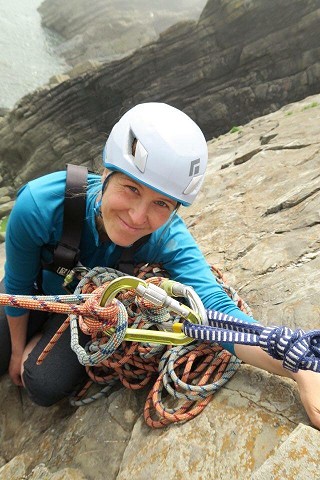
A common recommendation when climbing in pregnancy is to ‘listen to your body’ and stop when it no longer ‘feels right’. This would seem like sound advice except that I’m not sure it applies to climbing. How many times have you topped-out without realising that your knuckles are bleeding, or having forgotten how you did the crux? When climbing, you are usually highly focussed and adrenaline can run high, making it quite difficult to listen to the subtleties of your body. In running by comparison, recent research has shown that during pregnancy, Ratings of Perceived Exertion (RPE) do not correlate strongly with heart rate (HR), and judgements made this way can lead to a significant underestimation of effort. Current advice is therefore that women should measure heart rate directly from the second trimester onwards if they are trying to train in a ‘safe zone’. If the same principle applies to bodily cues in rock climbing, how should pregnant women decide whether or how much to curtail their sport?
If you ask your doctor or midwife if you can continue rock climbing in pregnancy, chances are most will advise against it (and likely recommend yoga instead). This is largely because the majority of medical professionals don’t have an appreciation of the real risks involved in the sport and how they can be managed; assuming instead that there is a high chance of bodily impact. This is in part because there is no published scientific research on the effects of climbing in pregnancy. Nevertheless, in recent years there has been a surge in studies looking into the benefits of exercise in general for pregnant women. Greater fitness has now been linked to greater foetal brain development, improved placental growth, reduced rates of depression and gestational diabetes and a better labour experience – not to mention a quicker return to fitness after the baby. So why not climbing?
With a scientific background (PhD in neurobiology) and a desire to keep climbing, I set about getting some answers from other climbing mums and medical professionals in the know. What I found out is that ultimately everyone is different, as is every pregnancy. Although as a general rule, pregnancy is not a time to push your climbing limits, it might be advisable to scale back a bit. But there is no need to stop altogether. Women need to be aware of the facts so that they can make informed decisions, which take into account their own personal fitness, climbing ability and level of experience. Here are a few things to think about…
Equipment
Most women will want to consider using a full body harness from the second trimester onwards, when the uterus sits higher in the body and the baby is no longer protected by the pelvis. You can now buy pregnancy-specific harnesses with padding (tape ones are less comfortable but cheaper). You might also want to don those comfy rock shoes, as about half of all pregnant women experience some oedema, making feet and ankles swell.
Physiology
Make sure you take plenty of snacks with you and extra water. It is especially important to stay hydrated and seek shade from the hot sun. When climbing in Kalymnos in my first pregnancy, I found it all too easy to overdo it when climbing in the heat of the day.
As a pregnancy progresses, your centre of gravity also changes. I found however, that balance was simply a case of use-it-or-lose it and by keeping up my climbing throughout, it was possible to adjust and compensate for these gradual changes (although you do get ‘pushed out’ increasingly far from the wall as bump grows!)
During pregnancy, levels of the circulating hormone relaxin increase flexibility by softening structures of the musculoskeletal system (peaking in the first trimester and before delivery). While the main function is to relax the pelvic ligaments and aid labour, elsewhere in the body it tends to increase joint laxity and can predispose pregnant women to strains and sprains. This is something to be aware of before contorting your body through strenuous technical moves. However, this would likely only be a problem if these positions are ‘unusual’ for you, as opposed to moves that are within your normal climbing range.
Compared to climbing, yoga is a popular sport in pregnancy and is often recommended to help mums-to-be stay fit, strong and supple. However, there is very clear advice on yoga positions which must be avoided in pregnancy, such as the Plow and Locust poses or deep bending/crunching motions. The same can be said of climbing; think about the positions you use, avoid twisting and try to stay ‘open’ wherever possible.
Type of climbing
It is a personal decision which type of climbing you do when pregnant, but it is worth considering the different levels of risk involved, the likelihood of falling and how to mitigate this. The shearing forces from taking or belaying a big fall in the second or third trimester could, in theory, rip the developing placenta from the wall of the uterus (placental abruption) and in a worst case scenario result in miscarriage. I therefore chose to give up leading trad early in pregnancy and stuck to seconding, both indoors and out. In my first pregnancy I gave up bouldering altogether but in the second I took a trip to Fontainebleau, climbing easy circuits on boulders which could be descended without jumping down. It is also worth thinking about how you spot others.
I took a break from winter/ice climbing on account of the frequency with which ice and snow can come down from above, especially if there are other climbers above you (and maybe if I’m honest because the walk-ins are very tiring with a bump and big pack!) But again this is an individual choice and many women will continue much as they did before.
Libby Peter, climbing instructor, International Mountain Guide and mother of two says, “I chugged along with rock-climbing through both pregnancies, more to keep my hand in, and stay sane than anything else. I stopped leading once I needed a full body harness, but kept on seconding with anyone that wasn’t intimidated by the bump! Psychologically this meant that I could cling on to my sense of identity for as long as possible, aware that this was about to be seriously challenged.”
As a side note, abseiling and lowering in a full body harness can be awkward as the rope is attached to your chest, not waist, making it tricky to lean out. Some are also quite painful when loaded this way for long, which makes hanging belays an even more uncomfortable proposition!
Route choice
In pregnancy, the slab is your friend. By sticking to slabs and walls and avoiding strenuous overhangs you reduce the stress on your core. This is important because the rectus abdominis muscle is already under strain in pregnancy due to the growing uterus, and two thirds of pregnant women experience some abdominal muscle separation in this area as baby grows. However, what individuals find ‘strenuous’ for their core is of course all relative.
In terms of the risk of falling, you might choose to avoid traverse lines or routes with down-climbs, even if seconding.
On a lighter note; expect to have to pee during a multi-pitch route! Maybe more than once. Frequent urination is a very common symptom of pregnancy, even in the first few weeks.
Safety
I hate to say it but ‘Mumnesia’ is real. Scientific studies have confirmed its existence and blame a combination of fatigue, hormonal changes and stress for the loss of memory often referred to as Pregnancy-Brain. Fortunately however, it is reversible and intellectual capacity is not affected. Nevertheless, it’s important to double check your knots and ensure that your harness is done up correctly, even if tying in is second nature. Growing a new life can be a bit distracting!
Current medical opinion
As for any exercise in pregnancy, you are advised to seek medical advice if you have any complications or your pregnancy is considered to be high-risk. But for normal, healthy pregnancies the tide of advice is turning.
In 2015, two climbing doctors from the US (an obstetrics and gynaecology specialist and an ER doctor), carried out a survey of 325 climbers, regarding 339 pregnancies. Most participants delivered at term with lower rates of gestational diabetes and pre-eclampsia (high blood pressure in pregnancy) compared to the national US average. However, the women who responded to the survey were generally extremely healthy even before pregnancy. Nevertheless, the study found that the majority of women climbed, without complication, into their third trimester before they stopped but decreased the level of their routes to an easier grade for safety. Interestingly, the average time taken to return to climbing after delivery was a mere 3.5 months!
Long Huynh is the Ob/Gyn consultant from the study. Based in Boulder, Colorado she now advises her patients to ‘climb away!’ However, she says ‘be smart about which routes you pick and your climbing style. Top-roping is a lot safer as you move through your pregnancy, as opposed to leading. Climbing easier grades (well within your strength level) can still feel GREAT and be ‘challenging’ in their own way as you accommodate a changing body’.
But it’s not all about baby; ‘Staying fit during pregnancy is mentally important for mum, and as long as you are smart and cautious, there's no reason why climbing cannot be a part of your pregnancy exercise routine’ – Dr Jenny Cohen, Phoenix.
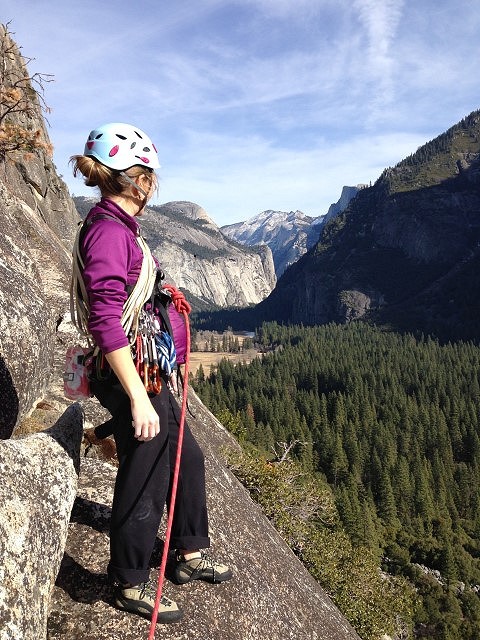
US pro-climber Beth Rodden was one of the women who responded to the medical survey. She used her own blog to get the survey out into the public domain (see www.bethrodden.com for the full results). ‘When I found out I was pregnant I started googling anything I could find on pregnancy and climbing and found little to nothing out there. I was confused and scared, not knowing what was safe and what could harm me or the baby. I was very open with my consultant and midwife who guided me through the process of listening to my body and climbing through my pregnancy. I climbed until I was about 6 months pregnant; top-roping easy climbs, as that's what felt right to my body. Throughout my pregnancy I wrote extensively about my experiences and heard from hundreds of women throughout the world. Each experience was so different! Some climbers didn't climb at all and others climbed until right before delivery. I think the thing I learned was to be smart and listen to your body and be open with your midwife.’
In conclusion, rock climbing is a great way to stay fit and enjoy the outdoors, even when pregnant. And while there is a lot to think about, I found it provided an enjoyable constant in a life where everything else was changing. The novelty of the experience also sets a precedent for the next tricky stage; climbing with kids.

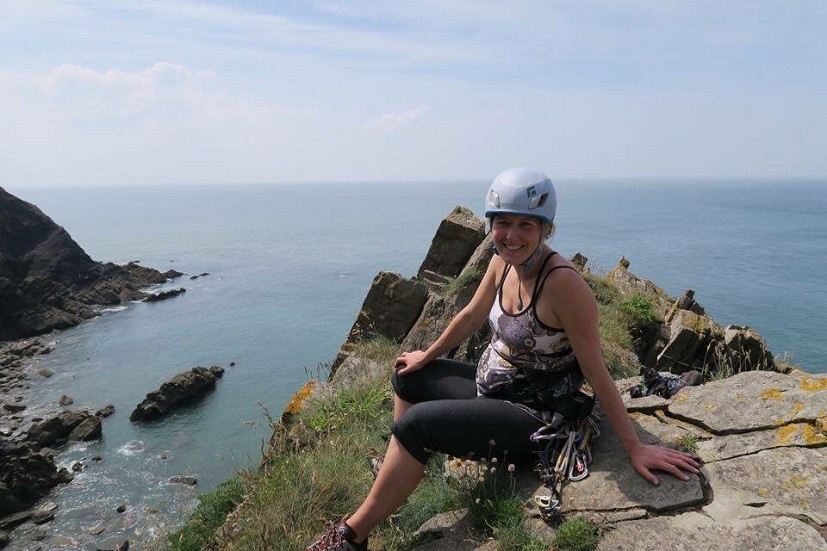
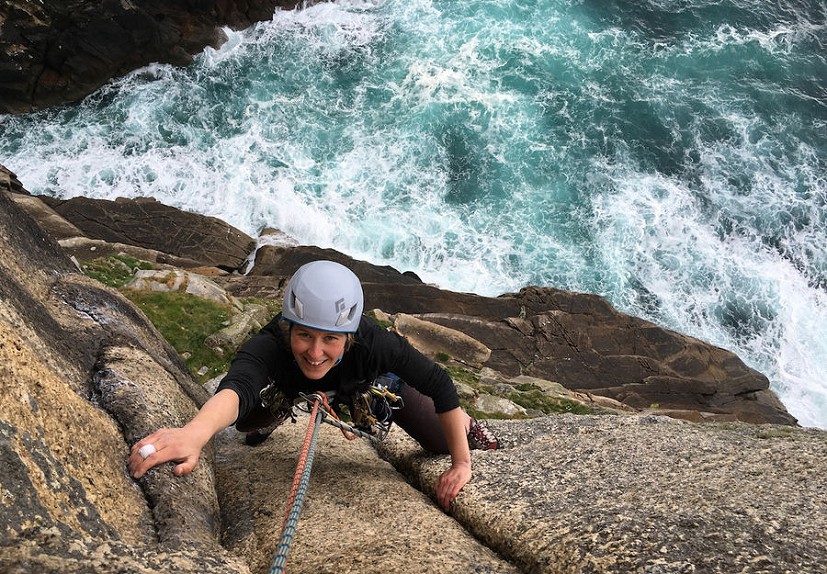
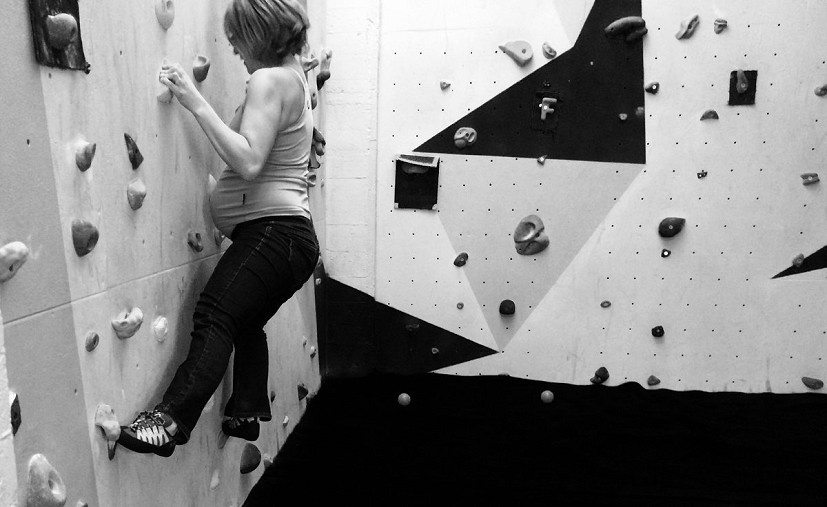

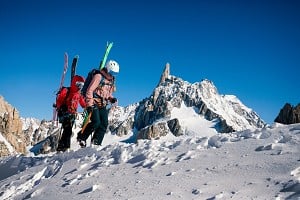
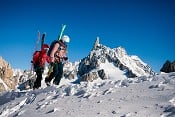
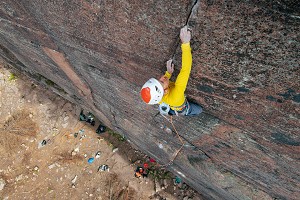
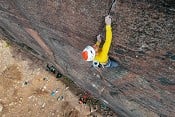








Comments